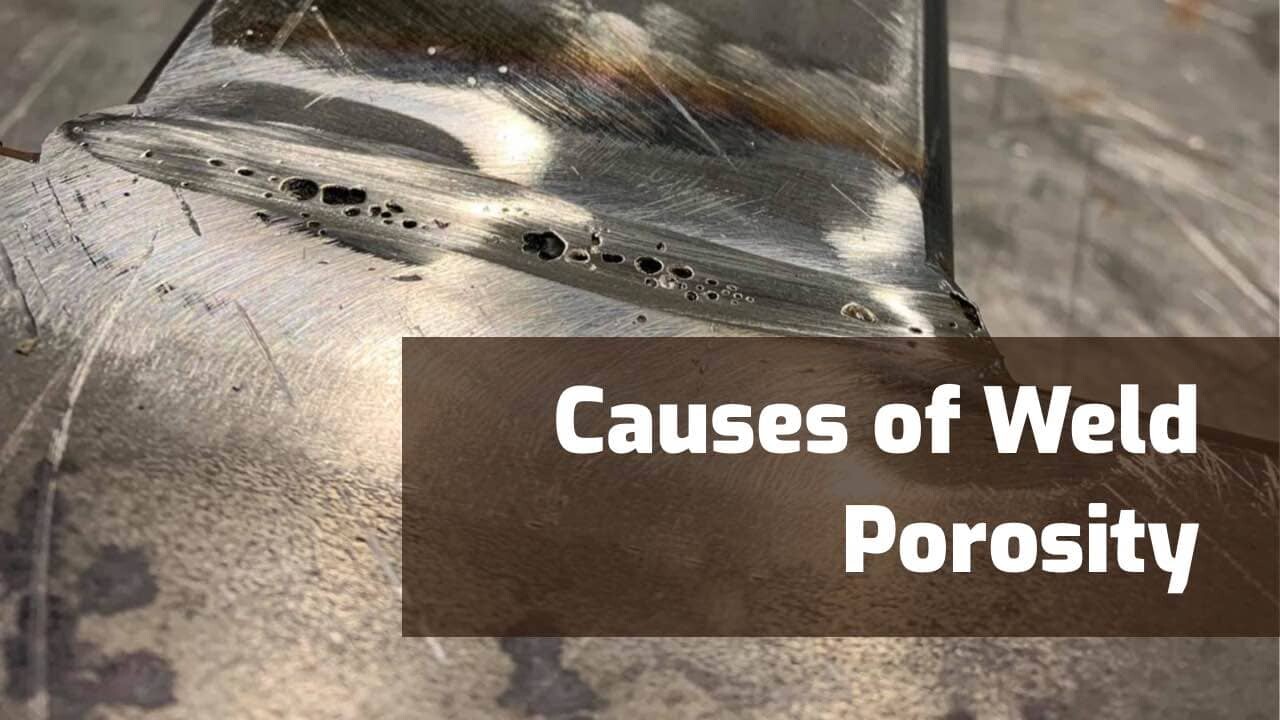Understanding What is Porosity in Welding: Reasons and Solutions
Understanding What is Porosity in Welding: Reasons and Solutions
Blog Article
Untangling the Enigma of Porosity in Welding: Tips for Decreasing Issues and Making Best Use Of Quality
In the complex world of welding, porosity remains a relentless obstacle that can significantly influence the top quality and integrity of bonded joints. Recognizing the factors that add to porosity formation is critical in the search of perfect welds. By deciphering the mystery of porosity and executing reliable methods for problem minimization, welders can raise the requirements of their work to attain superior top quality outcomes. As we look into the depths of porosity in welding, revealing the secrets to its avoidance and control will certainly be paramount for professionals looking for to understand the art of high-quality weldments.
Understanding Porosity in Welding
Porosity in welding, an usual problem encountered by welders, refers to the presence of gas pockets or voids in the welded product, which can endanger the honesty and high quality of the weld. These gas pockets are usually trapped during the welding process as a result of various elements such as incorrect protecting gas, infected base materials, or inaccurate welding criteria. The development of porosity can deteriorate the weld, making it at risk to splitting and corrosion, eventually bring about architectural failings.
Understanding the root causes of porosity is vital for welders to effectively prevent its occurrence. By acknowledging the importance of preserving appropriate gas protecting, making certain the tidiness of base materials, and maximizing welding setups, welders can significantly reduce the likelihood of porosity development. Additionally, making use of methods like pre-heating the base material, using correct welding strategies, and performing complete evaluations post-welding can better help in decreasing porosity problems. Generally, a comprehensive understanding of porosity in welding is crucial for welders to produce high-grade and resilient welds.

Typical Root Causes Of Porosity
When examining welding procedures for possible quality issues, recognizing the common sources of porosity is necessary for maintaining weld honesty and avoiding architectural failings. Porosity, identified by the visibility of cavities or spaces in the weld metal, can substantially endanger the mechanical buildings of a welded joint. One usual source of porosity is incorrect protecting gas protection. Insufficient protecting gas circulation prices or improper gas combinations can bring about atmospheric contamination, resulting in porosity development.
Another prevalent source of porosity is the existence of wetness and contaminants on the surface area of the base metal or filler product. When welding products are not correctly cleaned or are revealed to high degrees of humidity, the evaporation of these contaminants during welding can develop spaces within the weld grain. In addition, welding at improper parameters, such as exceedingly high travel rates or currents, can create excessive disturbance in the weld pool, capturing gases and triggering porosity. By dealing with these usual reasons through correct gas shielding, product preparation, and adherence to optimum welding specifications, welders can minimize porosity and boost the top quality of their welds.
Methods for Porosity Prevention
Carrying out efficient preventative steps is vital in minimizing the incident of porosity in welding procedures. One technique for porosity avoidance is guaranteeing correct cleaning of the base metal before welding. Impurities such as oil, oil, rust, and paint can result in porosity, so detailed cleaning using proper solvents or mechanical approaches is vital.

Another key preventive step is the learn this here now option of the ideal welding consumables. Using high-grade filler products and shielding gases that appropriate for the base steel and welding procedure can significantly decrease the danger of porosity. Additionally, preserving correct welding criteria, Home Page such as voltage, existing, take a trip rate, and gas circulation price, is essential for porosity prevention. Differing the recommended settings can result in improper gas coverage and inadequate blend, leading to porosity.
Furthermore, using appropriate welding methods, such as preserving a constant travel rate, electrode angle, and arc size, can assist avoid porosity (What is Porosity). Sufficient training of welders to ensure they adhere to finest techniques and top quality control treatments is also essential in decreasing porosity flaws in welding

Finest Practices for Quality Welds
Ensuring adherence to market criteria and appropriate weld joint prep work are essential aspects of achieving regularly high-grade welds. In enhancement to these fundamental steps, there are numerous finest practices that welders can apply to even more enhance the high quality of their welds. One key method is keeping appropriate cleanliness in the welding location. Pollutants such as oil, oil, rust, and paint can detrimentally impact the quality of the weld, bring about issues. Completely cleaning the work surface and surrounding location before welding can assist mitigate these issues.
One more finest method is to very carefully choose the proper welding specifications for the certain materials being joined. Proper criterion option makes sure ideal weld penetration, fusion, and overall top quality. Making use of top notch welding consumables, such as electrodes and filler steels, can dramatically impact the last weld top quality.
Value of Porosity Control
Porosity control plays a vital duty in making sure the honesty and quality of welding joints. Porosity, characterized by the visibility of cavities or voids within the weld metal, can significantly compromise the mechanical homes and structural honesty of the weld. Extreme porosity deteriorates the weld, making it more susceptible to cracking, rust, and overall failing under operational lots.
Reliable porosity control is important for keeping the desired mechanical buildings, such as strength, ductility, and sturdiness, of the welded joint. What is Porosity. By decreasing porosity, welders can enhance the general top quality and reliability of the weld, making sure that it fulfills the performance demands of the designated application
Furthermore, porosity control is important for achieving the desired visual look of the weld. Excessive porosity not only deteriorates the weld yet also detracts from its visual charm, which can be crucial in sectors where aesthetic appeals are necessary. Proper porosity control methods, such as utilizing the proper securing gas, controlling the welding criteria, and guaranteeing appropriate tidiness of the base materials, are necessary for generating high-quality welds with minimal problems.

Final Thought
In conclusion, porosity in welding is a common defect that can endanger the top quality of the weld. It is necessary to manage porosity in look at this web-site welding to guarantee the stability and stamina of the final item.
Report this page